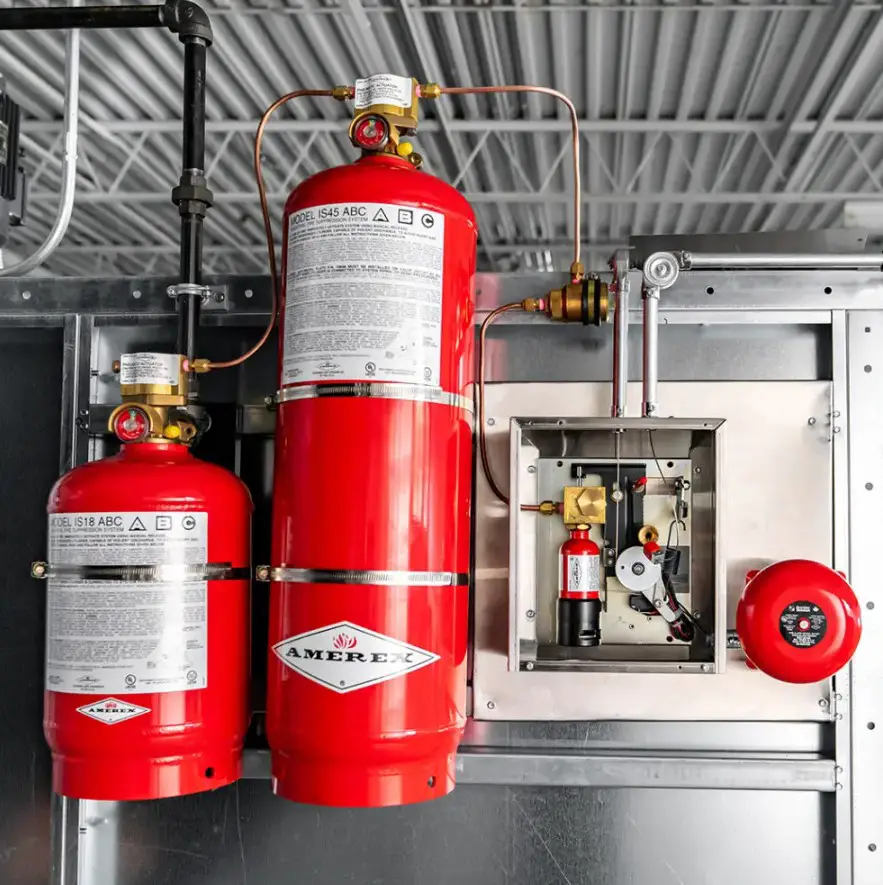Fire protection systems and services are critical components in safeguarding lives, property, and the environment from the devastating effects of fire. These systems are designed to detect, control, and extinguish fires, providing a comprehensive approach to fire safety. In this article, we delve into the different types of fire protection systems and services, their functionalities, and the importance of integrating these systems into buildings and industrial setups.
1. Fire Detection Systems
Fire detection systems are the first line of defense in identifying potential fire hazards. These systems are designed to sense the presence of smoke, heat, or flames and alert occupants and emergency services.
- Smoke Detectors: These devices detect smoke particles in the air, triggering an alarm to warn occupants of potential danger. They are essential in residential, commercial, and industrial settings.
- Heat Detectors: Heat detectors respond to temperature changes or a specific temperature threshold. They are ideal for environments where smoke detectors may cause false alarms, such as kitchens or garages.
- Flame Detectors: Flame detectors sense the presence of flames using ultraviolet (UV) or infrared (IR) sensors. They are commonly used in industrial facilities where flammable materials are handled.
2. Fire Suppression Systems
Fire suppression systems are designed to control or extinguish fires, minimizing damage and ensuring safety. These systems are typically activated automatically when a fire is detected.
- Sprinkler Systems:
- Wet Pipe Systems: These contain water in the pipes, ready for immediate discharge when triggered by heat. Wet pipe systems are commonly used in office buildings and residential complexes.
- Dry Pipe Systems: Filled with pressurized air or nitrogen, these systems release water only when the sprinkler head is activated. They are suitable for environments prone to freezing temperatures.
- Deluge Systems: Equipped with open sprinkler heads, deluge systems release water simultaneously when activated, making them ideal for high-hazard areas.
- Gas-Based Systems:
- Carbon Dioxide (CO2) Systems: These systems use CO2 to displace oxygen, effectively smothering the fire. They are suitable for electrical rooms and server centers.
- Clean Agent Systems: Utilizing gases like FM-200 or Novec 1230, these systems suppress fires without leaving residue, protecting sensitive equipment.
- Foam Systems: Foam suppression systems mix water with a foaming agent to form a blanket over the fire, cutting off its oxygen supply. They are widely used in industries handling flammable liquids.
3. Passive Fire Protection Systems
Passive fire protection (PFP) involves structural measures to contain fires and prevent their spread.
- Fire-Resistant Materials: Walls, doors, and ceilings constructed with fire-resistant materials help compartmentalize fires, delaying their progression.
- Fireproof Coatings: Applied to steel structures and other materials, these coatings enhance fire resistance and structural integrity during high-temperature exposure.
- Fire Stopping: Fire stopping involves sealing gaps and openings in walls, floors, and ceilings with fire-resistant materials to prevent the spread of smoke and flames.
4. Emergency Lighting and Signage
Emergency lighting and signage are crucial components of fire safety, ensuring safe evacuation during a fire.
- Exit Signs: Illuminated exit signs guide occupants to the nearest exits during emergencies.
- Emergency Lighting: These systems provide sufficient lighting during power outages, enabling safe navigation.
- Wayfinding Systems: Advanced wayfinding systems use dynamic signage and lighting to indicate the safest evacuation routes based on the fire’s location.
5. Fire Extinguishers
Portable fire extinguishers are essential tools for tackling small fires before they escalate. Different types of extinguishers are designed for specific fire classes:
- Water Extinguishers: Effective against Class A fires (ordinary combustibles like wood and paper).
- Foam Extinguishers: Suitable for Class A and B fires (flammable liquids).
- Carbon Dioxide Extinguishers: Ideal for Class B and electrical fires.
- Dry Powder Extinguishers: Versatile for Class A, B, and C fires (gaseous fires).
- Wet Chemical Extinguishers: Designed for Class K fires (cooking oils and fats).
6. Fire Alarm Systems
Fire alarm systems play a critical role in alerting occupants and initiating emergency protocols.
- Conventional Fire Alarms: These systems divide a building into zones, with alarms indicating the general area of a fire.
- Addressable Fire Alarms: Advanced systems that identify the exact location of a fire, providing precise information for quick response.
- Wireless Fire Alarms: Ideal for retrofitting older buildings, these systems use wireless technology to detect and communicate fire events.
7. Fire Safety Services
Professional fire safety services ensure the effective design, installation, and maintenance of fire protection systems. These services include:
- Risk Assessments: Comprehensive evaluations of fire risks in a property, identifying vulnerabilities and recommending solutions.
- System Installation: Expertise in installing fire protection systems tailored to specific building requirements.
- Maintenance and Inspection: Regular maintenance and inspection of fire protection systems to ensure optimal performance and compliance with regulations.
- Training: Fire safety training for employees and occupants, including evacuation procedures and the proper use of fire extinguishers.
8. Integration of Fire Protection Systems
Modern fire protection systems often integrate multiple components for a cohesive approach to fire safety. Smart systems use IoT technology to connect fire alarms, sprinklers, and monitoring devices, enabling real-time alerts and remote management. Integration enhances response times and ensures comprehensive coverage.
9. Compliance and Regulations
Adherence to local and international fire safety regulations is vital for ensuring the effectiveness of fire protection systems. Regulatory bodies such as NFPA (National Fire Protection Association) and OSHA (Occupational Safety and Health Administration) provide guidelines for the design, installation, and maintenance of fire protection systems.
10. The Importance of Fire Protection Systems
Fire protection systems are not only a legal requirement but also a moral responsibility. They:
- Save Lives: Early detection and suppression of fires significantly reduce fatalities and injuries.
- Protect Property: Fire protection systems minimize damage to buildings, equipment, and inventory.
- Ensure Business Continuity: By preventing extensive damage, these systems help businesses resume operations quickly after a fire event.
Conclusion
Understanding the different types of fire protection systems and services is essential for creating safe living and working environments. From detection and suppression to passive protection and emergency response, these systems work together to mitigate fire risks. Regular maintenance, professional installation, and adherence to regulations ensure their effectiveness, providing peace of mind and safeguarding lives and property. Investing in robust fire protection systems is a commitment to safety, resilience, and the well-being of all occupants.



